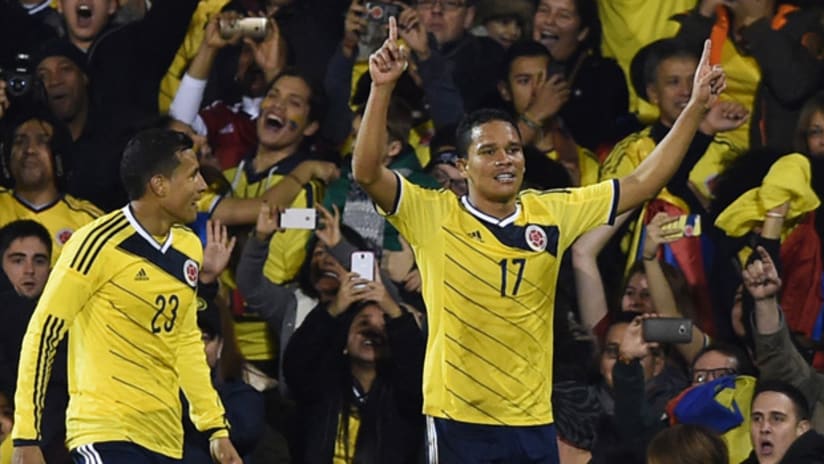SANTA CLARA, Calif. – Colombia’s resurgence to the international soccer stage became clear after their impressive run in the 2014 World Cup, where they reached the quarterfinals for the first time in their history.
After four previous World Cup appearances, Colombia had only managed to reach the Round of 16 once (in 1990), getting eliminated in the group stage the other three times. What’s more impressive about Colombia’s performance in 2014 is that they had failed to qualify for three consecutive World Cups (2002, 2006, 2010) before Brazil.
“[When I took over the national team], we had players that had played as many as four qualifying processes, that had a vast experience, but also had many frustrations,” said Colombia’s men's national team head coach José Néstor Pékerman at a press conference on Thursday afternoon, before facing the US men's national team in Friday's Copa América Centenario opener (9:30pm ET, FS1, Univision, UDN). “These players were wishful, but they had also faced long periods of time where they were fighting for something they couldn't achieve.”
Pékerman not only changed the mentality of the players at his disposal, but he replaced some established players that had been an integral part of the national team. Skepticism surrounded Pékerman’s appointing at first, but the Argentine led Colombia to their best result in CONMEBOL qualifying and a historic World Cup appearance.
“We found some balance and we got together to build a strong national team. As it happens in every single aspect of life, things change and soccer evolves,” Pékerman said. “The Colombian league became stronger, the amount of players around the world grew, and before it was unthinkable to have so many players in the soccer world elite. Mixing players with a high competitive level and the surge of young talent that have enough conditions, have been the base in this process.”
Nevertheless, after the 2014 World Cup, Colombia underwent a new generational transition that is still ongoing. Standouts during the latest qualifying process and the World Cup itself like Radamel Falcao, Teófilo Gutiérrez, Freddy Guarin, Mario Alberto Yepes, Pablo Armero and Juan Camilo Zúñiga are no longer in the spotlight, and new blood, like 24-year-old Inter Milan center back Jeison Murillo, has started to rise.
“We have a lot to do. Colombia has the memory of a team that competed at the highest level in Brazil and had a great tournament, but we knew that in a long process, many players would be dropped due to fatigue or age,” said Pékerman. “We need to have some balance between those players with experience and who know what it means to win important things, so they can pass that on to the new players.”
The game on Friday against the United States will be the spear of this new process under Pékerman, a second one with major considerations and prospects.
“We have a lot of expectations. The team has had a few changes in areas we needed it, and some players have specific characteristics that have enriched the team,” said Pékerman. “Obviously, some of them still lack international experience, and we believe they can get there with competitiveness in tournaments like [Copa América Centenario].”













